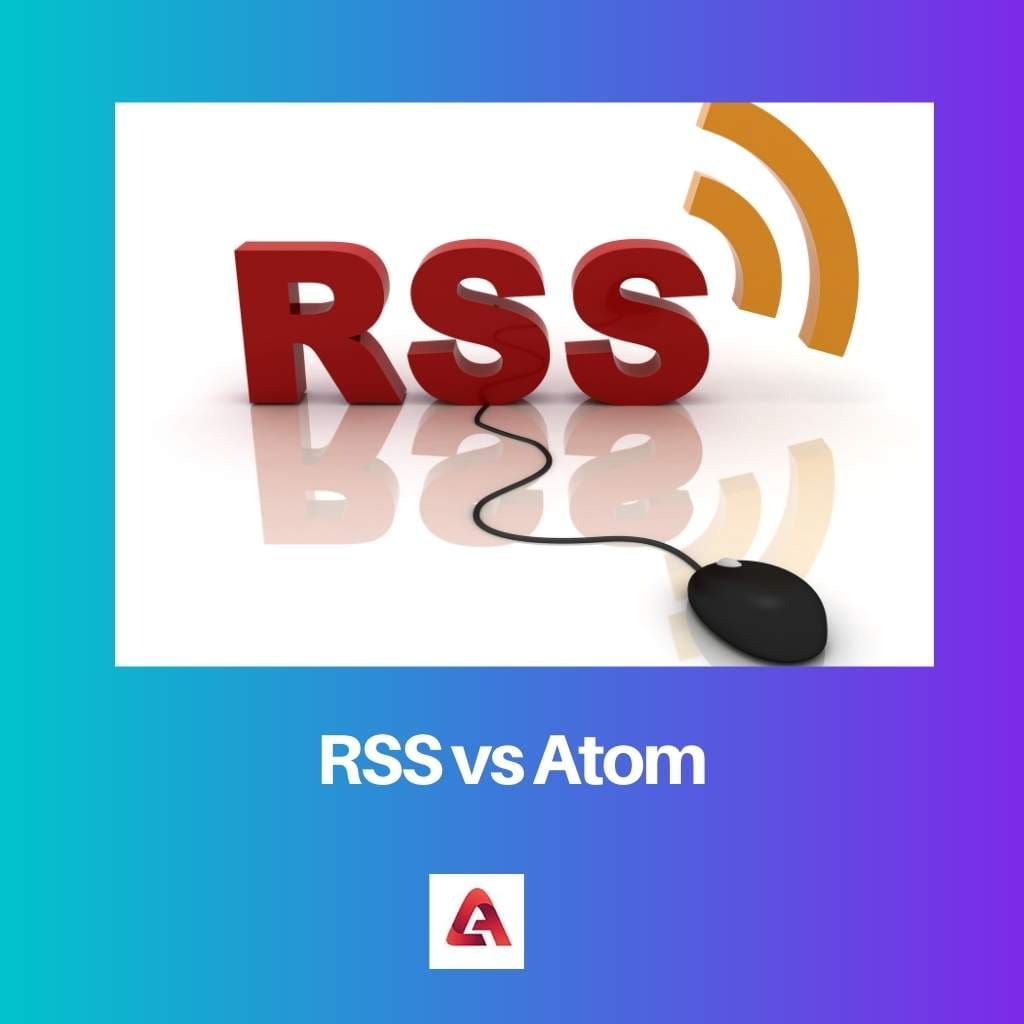A web feed is used for getting the update frequently without visiting separate websites. It is useful to the publishers as well as it offers help in automating the syndication process. The most famous and iced web feeds are RSS and Atom.
Both of them are used for the same purpose: to get information about updates or recent changes in websites without visiting them. Due to their use, both of them are confused the most.
It is important to differentiate or know about them individually to decide which is more suitable for which purpose separately. Following are some differences along with the information about both of them to remove the confusion between both web feeds.
Key Takeaways
- Both are XML-based web syndication formats for sharing content updates, but Atom offers more advanced features.
- Atom supports content history and versioning, while RSS provides only the latest updates.
- RSS is more widely adopted, but Atom allows for greater flexibility and customization.
RSS vs Atom
Real Simple Syndication (RSS) is a technology that allows users to track content from multiple sources in a single platform. It expands the audience’s reach and saves time. Atom is a syndication file format that offers advanced features and different types of payload. It also has an auto-discovery feature.

Real Simple Syndication provides the updates of websites or web pages in a more standardized way. It was developed by the RSS advisory board, and RSS 2.0 is the latest version of it, which is present as either an escaped HTML or plain text content model.
It was released in 15 marches in 1999. It shows the date of either the last update or the creation date. It does not offer autodiscovery as a standardized feature.
Atom is a pair of related Web Standards that allows checking the latest updates and changes in the websites and webpages. It has several types of payloads, including escaped HTML and plain text.
It shows the date of its last update date in date format. The process of aggregating and extracting is quite easy in this. It also offers autodiscovery as a standardized feature, which is also distinguishing partial from excerpts.
Comparison Table
| Parameters of Comparison | RSS | Atom |
|---|---|---|
| Content model | Either escaped HTML or plain text. | Several types of payload |
| Date formats | When feed was last time updated and created of it. | When it was last updated. |
| Aggregating | Complicated | Easier |
| Auto-discovery | Not a standardized feature | Standardized feature |
| Partial & Excerpts’ Difference | Does not distinguish | Distinguish |
What is RSS?
Following are the pros and cons of RSS that should be taken into consideration before choosing it:
PROS:
- Saves Time: It can save time, as a user can scan the feed without visiting websites separately. Users can get additional information by just clicking on any items.
- Spam Free: it is free of any kind of spam. Users can get the information they are seeking without getting into any spam.
- Easy Unsubscribing: Unsubscribing is as easy as subscribing. Therefore if any information is not required by the user, he can unsubscribe it from the feeds easily and will not see it again.
- Expands audience: This is one of the major benefits of RSS as it is designed for syndication, which leads to the expansion of the audience by increasing the reach of the business.
- Increase Productivity: It increases productivity as information can be accessed with one click and saves time.
CONS:
- Not Widely Opted: It is not used widely. It may be due to the reason for the increase in competition. There are other web feeds that offer similar and more features.
- Can be Copied: It is not safe from copying of content. It can be coped with easily without your permission.
- Tracking is Difficult: It is very difficult to track the information about people who have subscribed to it and read the information in the feeds.
What is Atom?
It is more recent as compared to RSS, and this is also one of the reasons behind its usage as an alternative to RSS. It offers more advanced and extra features, such as autodiscovery and contains more types of payloads than RSS.
It was introduced in June 2003, and the main reason behind its introduction was to overcome all the limitations of the latest version of Real Simple Syndication – RSS.
It also allows the extension to its namespaces, which is not allowed in RSS. It can use all the standard web encryption techniques of RSS along with XML Encryption and XML Digital Signature.
There is no limitation, such as backward compatibility and restriction on ongoing innovation in this. Readers are used for reading the work feed as in RSS. It is based on the new IEFT standard that was launched in 2005.
The protocol used for creating and updating web resources is Atom Publishing Protocol, which is HTTP-based.
Main Differences Between RSS and Atom
- Both of them have different types of payloads. RSS 2.0 can only have two types of payloads: either escaped HTML or plain texts, whereas, in comparison to it, the atom has many types of payloads such as escaped HTLM, plain text, XML, XHTML, Base64-encoded binary, etc.
- Both RSS and atoms show the date stamps, but the difference is that both of them show the dates of different events in them. When it comes to RSS, it can show the dates of two events, the creation date, and the date when it was last updated, while atoms show the date of only one event, that is, when it was last updated.
- RSS, with the help of its mechanism of vocabularies, can also indicate the human language for its feed, whereas standard XML of the lang attribute is used by the atom along with the characters that lie outside the character set of US ASCII.
- Vocabulary elements of RSS cannot be used in other XML vocabularies, whereas vocabulary elements of atoms can be used in other XML vocabularies as atoms allow the outside usage of elements.
- In terms of publishing protocols, RSS has two publishing protocols, whereas Atom has only one standardized protocol. Two publishing protocols of RSS are the Blogger protocol and MetaWeblog.
- Lastly, they also differ when it comes to the requirement of content on the feed. RSS, being less restrictive or loose in nature, does not require large or much data, while the atom is the opposite of it in this case and is more restrictive and hence requires more data.
- https://books.google.com/books?hl=en&lr=&id=xuPaOWcryZAC&oi=fnd&pg=PT9&dq=RSS+and+Atom&ots=rLNKBa-mPS&sig=HIxQKO08Um1a0jyQIlMkpxEw7hg
- https://books.google.com/books?hl=en&lr=&id=IGHQpIQJ2YUC&oi=fnd&pg=PR25&dq=RSS+and+Atom&ots=jxcpGNG0VS&sig=BgYEgcur-EvM8_eXIhUQsdvpKk8
- https://ieeexplore.ieee.org/abstract/document/1463164/
- https://link.springer.com/chapter/10.1007/978-1-4302-0139-7_14
- https://dl.acm.org/doi/abs/10.1145/2481492.2481523




